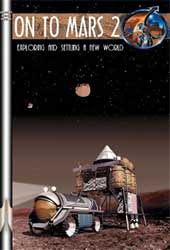
Mars is the planet most like Earth. With this accreditation, it has remained one of the likeliest off-world places for people to colonize. There are the usual obstacles; long distance, no water, no infrastructure and a harsh environment. But with any fresh world, there are great opportunities for new technologies, new leadership and new societies. Governments of countries on Earth understandably have no mandate to establish colonies off-world and they’ve shown little progress. However, their constituents do have both the mandate and desire to pursue this captivating goal. Drawing on this desire is the organization called The Mars Society. Within are thousands of people who regularly contribute to our knowledge base on how people can successfully get to and profit from Mars. In their view, combining opportunities and desires into a concerted effort is one means of having that first human footfall on the Martian surface.
Lacking a government’s or business’ mandate to step onto Mars, the Mars Society is a ready outlet for people with this desire. Annual conferences allow individuals and teams to come together to spread the word. This book, and its enclosed CD, collect an expansive selection of contributions apparently from a number of conferences between the years 2000 and 2004. Many contributions are reports in scientific format that result directly from two of the Mars Society’s research encampments; the Mars Desert Research Station in Utah and the Flashline Arctic Research Station on Devon Island. At these sites, people with no astronaut training or experience but lots of desire can emulate the tasks and challenges of a hypothetical Mars site. In so doing, they can actively add knowledge today to contribute to tomorrow’s footfall.
Though the analogue sites are the basis for most of the papers, they don’t constrain the topics. Given the unique conditions of the sites (e.g. bare rock and hostile climate), people can assess particular aspects of a team on Mars. They can simulate and examine group dynamics amongst the participants, construct storage vaults using local material and measure dust ingress before gears grind to a halt. Contributors with other backgrounds and objectives also have reports. For them, sites may be backyards for greenhouse studies, desks and computers for rocket design or purely their own experience, such as with quality management. In essence, as we’re going to have to replicate many of the natural and human contrived processes, the Earth is just one big analogue.
With so much to choose from, there’s no wonder that the reports cover a broad selection of topics. This is the book’s undoing. All topics relate to Mars but this is the only common thread. Some get very technical, such as discussing bit rates and data packets for computer networks. Others are almost dreamy in their visions of leadership and government. Because of this, it is the authors’ passion that rises up to claim the common thread rather than the technical work or the target. As well, a contradiction arises. The book begins by claiming that NASA’s constituency driven mandate makes poor results by being random and entropic. Yet, the perception from reading this book is that these individual’s efforts are equally random and entropic. Organization and focus are lacking.
Nevertheless, if you have any interest in a human presence on Mars, this randomness shouldn’t and indeed won’t trip you up. This book will empower the average person to get off their duff and lend a hand. As is obvious, much work needs doing and there are many ways to contribute. The international range of authors and the many formats (e.g. reports, poetry and song) demonstrate the many possible routes. The annual conference, the thousands of supporters and this book show that volunteers need not work in isolation or without appreciation.
With Mars never leaving its nearby orbit and shimmering down on us at night, we’re always reminded of its proximity. And, we’ve proven our ability to go into space and walk on the surface of other realms. The book On to Mars – Volume 2 is a compilation by Frank Crossman and Robert Zubrin containing reports of ideas and results from people who are more than ready to put people on Mars. Their efforts speak loudly, and when that footfall first strikes, assuredly there will be a great chorus of cheers.
Review by Mark Mortimer
Read more reviews online, or purchase a copy from Amazon.com.
